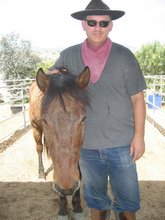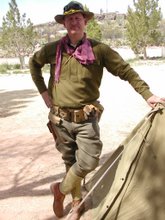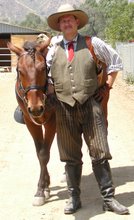Here's one class of battleship that's relatively little known. One of the most distinct features is that all the main gun turrets, three in total, are located forward which made for an interesting design. The Nelson Class was the product of design compromises due to the Washington Naval Treaty of 1922 and that was reflected in the turret arrangement.
In particular, I've always found the HMS Rodney to be especialy interesting and it had a varied career to include participating in hunting down the Bismarck. Here's some more from Wikipedia:
The Nelson class was a class of two battleships of the British Royal Navy, built shortly after, and under the terms of, the Washington Naval Treaty of 1922. They were the first British battleships built since the Revenge class (ordered in 1913) and their orders were not followed until the King George V class of 1936.
In order that they comply with the limitations of the Washington treaty, these ships were of an unusual design with many novel features. They are often referred to as the first treaty battleships.
The ships were named after famous British admirals: George Brydges Rodney, 1st Baron Rodney of the Battle of Cape St. Vincent and Horatio Nelson, 1st Viscount Nelson of the Battles of the Nile and Trafalgar.
The Battle of Jutland had shown the value of firepower and protection over speed and manoeuvrability.[citation needed] Admiral J.A. Fisher's dictum that "speed is armour" had been tested in battle and proved false.[citation needed] Thickness of armour and weight of shell were now seen as the keys to naval victory.
The next generation of British warships incorporated this lesson. After the First World War, the Admiralty drew up plans for massive, heavily armoured battlecruisers and battleships, far larger and stronger than all previous vessels. The G3 battlecruisers would carry 16-inch (406 mm) guns, and the proposed N3 battleships would carry nine 18-inch (457 mm) guns, and would be the most powerful vessels afloat. The Royal Navy was planning to hold its superiority in the burgeoning arms race, despite the large warships planned in Japan and the United States.
Development was abruptly curtailed by the Washington Naval Treaty of 1922, which brought the arms race to a halt. The four battlecruisers that had been ordered were cancelled. Some of the material acquired would later be used in Nelson and Rodney. The Treaty limited all nations' battleships to 35,000 tons and 16-inch guns. The British had successfully ensured that the definition of maximum displacement - the "standard displacement" - excluded both fuel and boiler feed water. They had argued that policing the widespread British Empire meant their ships had to carry more of both and they should not be penalised against nations, such as France and Italy, that operated much closer to their naval bases. As a result, water-filled internal anti-torpedo bulges could be incorporated, contributing only the "dry" (standard) weights and therefore not to the treaty limits.
The limits of the treaty inevitably led to compromises in the design of two new ships, and the resulting Nelsons class sacrificed installed power (and hence speed) in order that they be well-armed and defended. They were often referred to as the "Cherry Tree class", because they had been "cut down by Washington". The need to limit displacement resulted in a radical new warship design, drawing from the G3 and N3 designs. In order to reduce the weight of armour, the main gun turrets were mounted all forward, shortening the necessary armoured length. The G3 and N3s had put the two turrets forward of and one behind the bridge, but in the Nelsons, this was taken to extremes, and all three were in front of the bridge; 'B' was mounted superfiring over 'A', with 'Q' turret at the main deck level behind 'B', and therefore unable to fire directly forward or aft. The secondary guns were placed in weatherproof, director-controlled turrets at the main deck level and were grouped aft - another innovative element borrowed from the G3 and N3 design.
Armour weight was also limited by using an internal, inclined armour belt. The slope increased the relative width of the belt to a striking projectile. The internal disposition was intended to provide a low-resistance path in order to vent torpedo explosions out of the ship via displaceable plates, although this feature would prove to be unsuccessful. The external hull of the ship was unarmoured: the outer plating was meant to initiate detonation of shells which would then explode outside the armour. The armour scheme was of the "all or nothing" principle; areas were either well protected or were not protected at all, disposing of the multiple intermediate thickness of armour seen in older designs. For the first time a British battleship had a single, thick armoured deck to protect against plunging shells and aircraft-dropped bombs.
In particular, I've always found the HMS Rodney to be especialy interesting and it had a varied career to include participating in hunting down the Bismarck. Here's some more from Wikipedia:
The Nelson class was a class of two battleships of the British Royal Navy, built shortly after, and under the terms of, the Washington Naval Treaty of 1922. They were the first British battleships built since the Revenge class (ordered in 1913) and their orders were not followed until the King George V class of 1936.
In order that they comply with the limitations of the Washington treaty, these ships were of an unusual design with many novel features. They are often referred to as the first treaty battleships.
The ships were named after famous British admirals: George Brydges Rodney, 1st Baron Rodney of the Battle of Cape St. Vincent and Horatio Nelson, 1st Viscount Nelson of the Battles of the Nile and Trafalgar.
The Battle of Jutland had shown the value of firepower and protection over speed and manoeuvrability.[citation needed] Admiral J.A. Fisher's dictum that "speed is armour" had been tested in battle and proved false.[citation needed] Thickness of armour and weight of shell were now seen as the keys to naval victory.
The next generation of British warships incorporated this lesson. After the First World War, the Admiralty drew up plans for massive, heavily armoured battlecruisers and battleships, far larger and stronger than all previous vessels. The G3 battlecruisers would carry 16-inch (406 mm) guns, and the proposed N3 battleships would carry nine 18-inch (457 mm) guns, and would be the most powerful vessels afloat. The Royal Navy was planning to hold its superiority in the burgeoning arms race, despite the large warships planned in Japan and the United States.
Development was abruptly curtailed by the Washington Naval Treaty of 1922, which brought the arms race to a halt. The four battlecruisers that had been ordered were cancelled. Some of the material acquired would later be used in Nelson and Rodney. The Treaty limited all nations' battleships to 35,000 tons and 16-inch guns. The British had successfully ensured that the definition of maximum displacement - the "standard displacement" - excluded both fuel and boiler feed water. They had argued that policing the widespread British Empire meant their ships had to carry more of both and they should not be penalised against nations, such as France and Italy, that operated much closer to their naval bases. As a result, water-filled internal anti-torpedo bulges could be incorporated, contributing only the "dry" (standard) weights and therefore not to the treaty limits.
The limits of the treaty inevitably led to compromises in the design of two new ships, and the resulting Nelsons class sacrificed installed power (and hence speed) in order that they be well-armed and defended. They were often referred to as the "Cherry Tree class", because they had been "cut down by Washington". The need to limit displacement resulted in a radical new warship design, drawing from the G3 and N3 designs. In order to reduce the weight of armour, the main gun turrets were mounted all forward, shortening the necessary armoured length. The G3 and N3s had put the two turrets forward of and one behind the bridge, but in the Nelsons, this was taken to extremes, and all three were in front of the bridge; 'B' was mounted superfiring over 'A', with 'Q' turret at the main deck level behind 'B', and therefore unable to fire directly forward or aft. The secondary guns were placed in weatherproof, director-controlled turrets at the main deck level and were grouped aft - another innovative element borrowed from the G3 and N3 design.
Armour weight was also limited by using an internal, inclined armour belt. The slope increased the relative width of the belt to a striking projectile. The internal disposition was intended to provide a low-resistance path in order to vent torpedo explosions out of the ship via displaceable plates, although this feature would prove to be unsuccessful. The external hull of the ship was unarmoured: the outer plating was meant to initiate detonation of shells which would then explode outside the armour. The armour scheme was of the "all or nothing" principle; areas were either well protected or were not protected at all, disposing of the multiple intermediate thickness of armour seen in older designs. For the first time a British battleship had a single, thick armoured deck to protect against plunging shells and aircraft-dropped bombs.

The machinery was of necessity limited in weight, size and installed power, and there were only two shafts; all previous British battleships since HMS Dreadnought of 1906 had four. In order that flue gasses be kept clear of the superstructure, the boiler rooms were moved behind the engine rooms, exhausting into a single funnel - another feature unique in British battleships. As a gesture to the limited power, the hull was of an efficient hydrodynamic form, to gain the best possible speed.
The large superstructure, which was triangular in plan, was sometimes referred to as the "Queen Anne's Mansions", from its similarity to a 14-storey brick residential development of the same name, opposite St. James's Park underground railway station in London. The superstructure provided spacious, weatherproof working spaces for the navigating officers and any flag officers embarked. Other than an emergency conning tower at its base, and the trunking for the main gun directors mounted on top, it was lightly armoured against splinters only, to save weight. Weight-saving measures included the use of light materials such as aluminium for fittings, and fir instead of teak for deck planking, although in practice teak decks were fitted in the 1920s, following concerns that the ships could not fire a full broadside without causing structural damage to the decks.
The Nelson class was a compromise design, and unsurprisingly there were shortcomings. The rear location of the superstructure caused manoeuvrability problems in high winds, with the superstructure acting as something of a sail, causing the ships to "weathervane" when steaming at low speeds. This was a particularly dangerous problem in crowded harbours, and the ships were difficult to dock and embark. They were also difficult to turn, and hard to steer when steaming astern. This is attributable to having twin screws and a single centre rudder which was out of the propeller race. However at sea they were reported to handle well.
The inclined armour disposition increased the danger of shells diving under the armour belt. With wave motion along the side of the ship, with the ship rolling, or with a list caused by damage, the ship would have been at risk of shells passing almost unhindered into its vitals.[citation needed] In publicly-released information, the Admiralty always showed the inclined armour to be much deeper than was actually the case.
Their main armament of 16-inch (406 mm) guns were mounted in triple turrets, the only RN battleships with this feature. The guns themselves were a step away from standard British designs. Where previous RN weapons fired heavy shells at a moderate velocity, the Nelson's weapons followed the German practice of a lighter shell at a higher velocity. This change in policy was due to British post-war testing of German equipment, although subsequent testing proved contradictory and these weapons were never considered to be as successful as the previous BL 15 inch Mark I. The guns suffered considerable barrel wear and had a large dispersion pattern. As a result their muzzle velocities were lowered which reduced their penetrative power. A heavier shell was needed to offset this, but the cost of producing new shells, and modifying shell handling and storage equipment, had come at a time when RN funding had been heavily reduced. The need to reduce weight and the use of triple mount turrets led to problems with the ammunition handling and loading machinery. The incorporation of many safety features achieved with lighter materials meant that the complex but relatively fragile equipment had to be worked on constantly over the ships' lifetime. These ships were fitted with the HACS AA fire control system and the Admiralty Fire Control Table Mk I for surface fire control of the main armament.
Finally, the blast of the guns disrupted officers on the bridge to such an extent that the guns were usually prohibited from firing abaft of the beam. A great deal of effort was expended in correcting this problem, and no solution was ever found; fitting tempered glass in the bridge window ports was tried, but gun blast shattered them and filled the bridge with flying debris.
There is a long-standing rumor that the ships could not fire a broadside (all guns in unison) in case of structural damage to the deck. This was disproved in Rodneys action with the German battleship Bismarck, where broadsides were fired without adverse effect.

HMS Nelson off Spithead for Fleet Review, prewar.

HMS Rodney firing towards Caen in support of the Normandy landings, June 1944

HMS Rodney, 1933










4 comments:
the info in this article is well thought out and very interesting thank you.I to have some interest in these battleships ,I scratch build remote control models and have built both the Rodney and Nelsen you can check them out on my site
freewebs.com/modelboatman2
modelboatman
Don
I enjoyed this article very much and am a big fan of the "Cherry Tree" class. Not the best British warship design but certainly a very powerful class, and I am sure the RN were Glad to have these fairly modern and very potent ships at the start of WW 2.
Very cool models! I like the Nelson right next to the Missouri- it's an interesting size comparison. The Rodney certainly put in a yeoman performance during the war, in spite of its limitations.
The British Navy experimented with several radical designs during this period - the Nelsons with their triple forward turrets and the King George V (etc) with quad-mount turrets. I've read they had constant problems with these unproved designs. If you look at the Battleship design book from the US Naval Proceedings press, the US considered some very radical designs also, but rejected them. The US ultimately constructed some very practical and beautiful battleship designs, a tribute to Yankee shipbuilding prowess.
Post a Comment